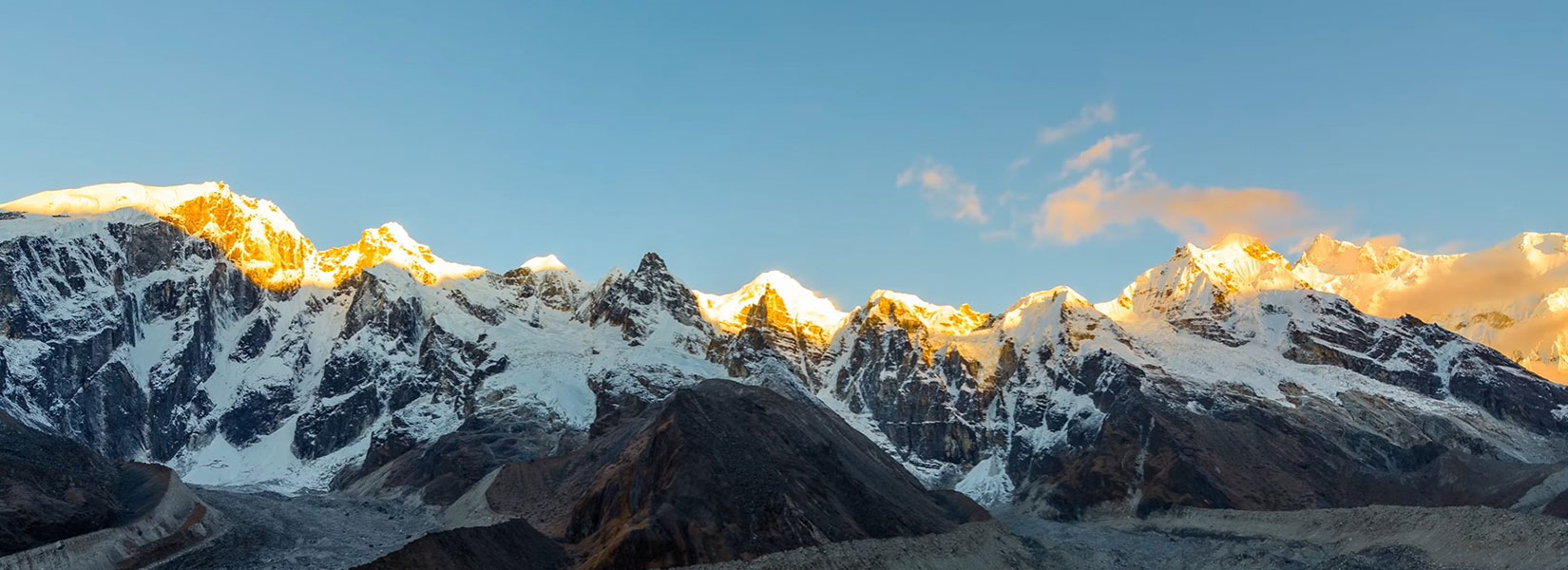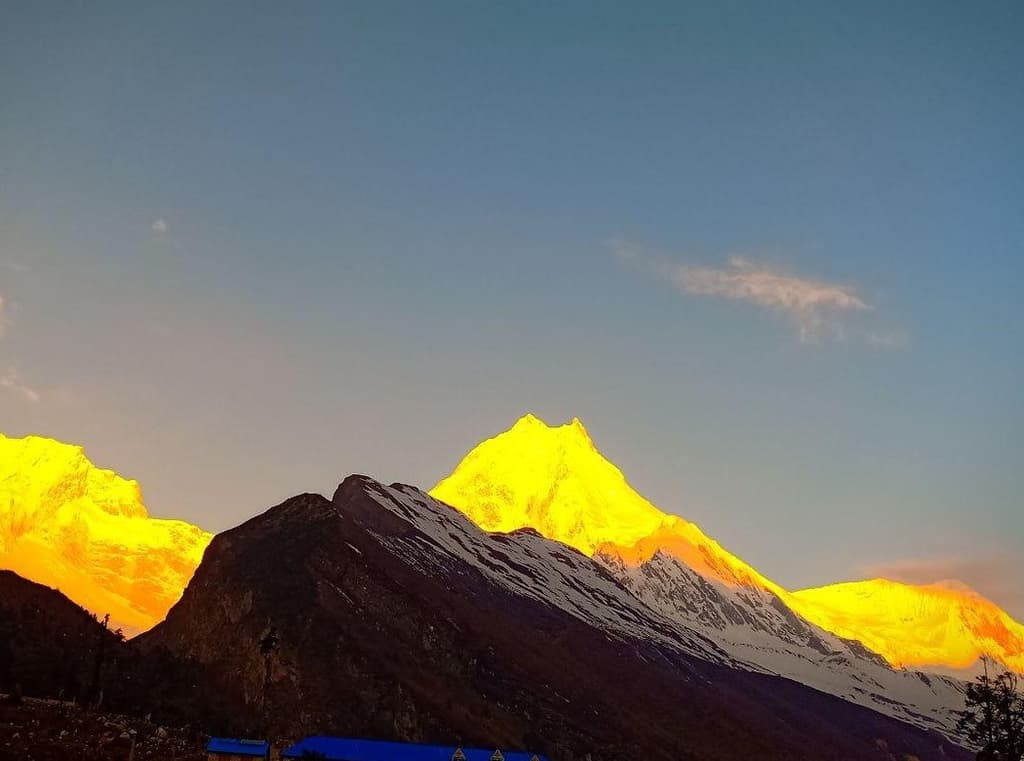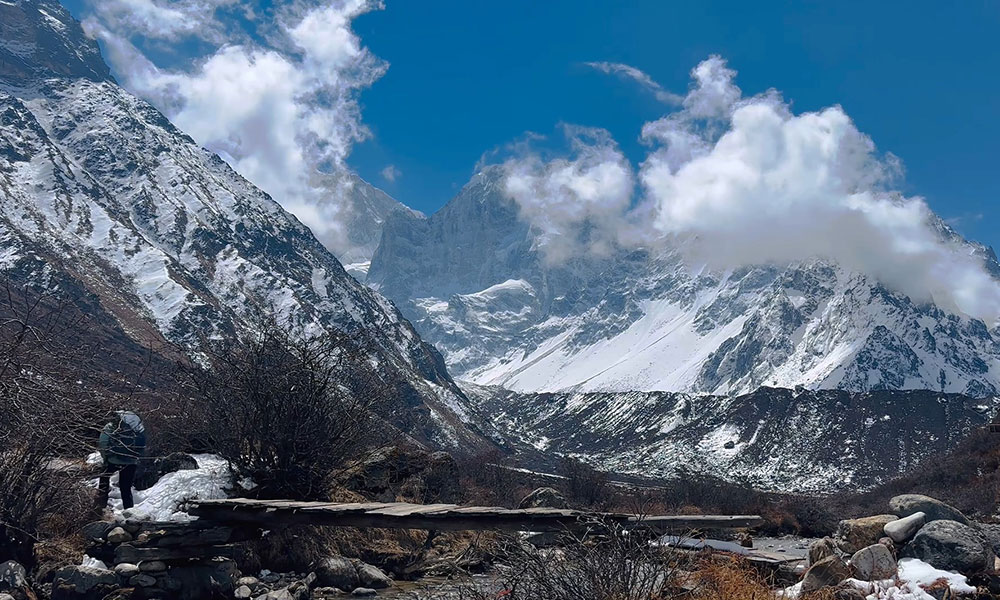
Kanchenjunga Trek is one of the mesmerizing treks in Nepal that comes with a blend of unforgettable journeys to the Kanchenjunga Region of Taplejung District. Featuring mindblowing natural beauty and cultural experiences, Kanchenjunga Trek stands as one of the most awe-inspiring journeys in the country , and many travelers naturally wonder about the Kanchenjunga Trek Cost and how much it takes to experience this once-in-a-lifetime adventure. Nestled in the lap of the mighty Himalayas, this trek offers trekkers a chance to completely immerse themselves into the unmatchable beauty of the picturesque villages, valleys, forests, flora, fauna, and diverse culture.
Kanchenjunga Trek is not a single-day trek or a short-term one. It is a multi-day trek that can be completed within a minimum of two weeks time frame. So proper preparation matters a lot while embarking on this beautiful trek. Some aspects include physical preparation, logistics and accommodation, permits, professional guides and porters, and price tags. We will be discussing Kanchenjunga Trek Cost in this blog. We will provide comprehensive price details that will be spent on the essential preparations and requirements throughout the journey. Stick with us until the end of the blog.
Kanchenjunga Trek Cost | What To Expect?
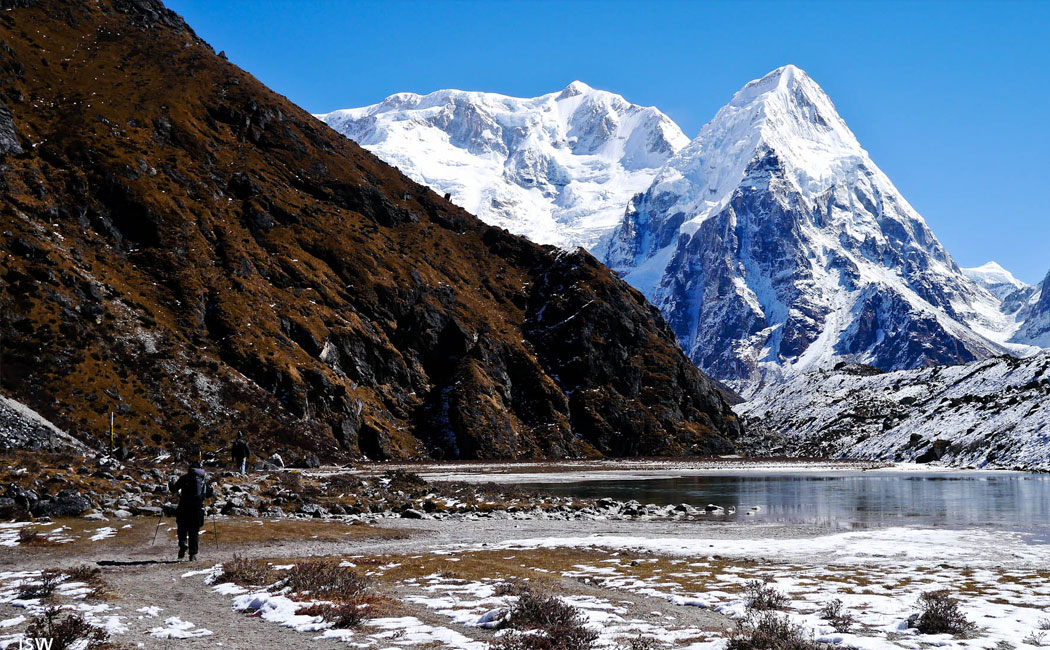
Many trekking enthusiasts keep Kanchenjunga Circuit and Base Camp as their next go-to destinations. And undoubtedly, one of the most asked questions regarding this journey is ‘What is The Total Kanchenjunga Trek Cost? Well, that depends on the trekkers’ interests and preferences. And one important thing to consider for the cost determination is that aspects such as time of year, group size, preferences of guides and porters, services, and others influence the cost. Here is a detailed breakdown of each segment contributing to the overall cost of this beautiful journey to the Kanchenjunga Region.
Permits and Licenses
Permits and licenses are required for all treks that are initiated within Nepal. Trekkers have to obtain the respective permits of the region where they are traveling. Concerning the Kanchenjunga Trek, trekkers must obtain two permits to travel around the region without any hassle. They are Kanchenjunga Conservation Area Project Entry Permit (KCAP) and Restricted Area Entry Permit (RAP).
Kanchenjunga Conservation Area Project Entry Permit costs Nrs 2,000 per person for foreign trekkers. Trekkers from South Asian Countries (SAARC Nations) have leverage in permit fees as the cost is around Nrs. 500 per head for them. The most privileged are the Nepali Trekkers, with only Nrs. 100 per person. The advantage of this permit is that it has no validity and time frame. Trekkers can use this permit until their journey ends in the Kanchenjunga region.
Similarly, Restricted Area Entry Permit (RAP) costs USD 10 per person. RAP is valid for a week, and after the validity expires, trekkers must pay extra fees to extend its validity, which is also efficient for a week. The cost of the additional permit fee is USD 10 per person. This permit is required during the trek around the trail in Tapethok and Yamphuding VDCs.
Why Do We Need Permits For Kanchenjunga Trek?
There is one strong reason for the requirement of permits to trek around the Kanchenjunga Region. And that is, Kanchenjunga Region is a restricted area. Nestled inside the Kanchenjunga Conservation Area, the region is protected under the controlled tourism policy. The main motive is to conserve the local flora, and fauna, and not to disturb the wildlife through human activities.
Kanchenjunga Conservation Area was established in 1997 and spread around 2,035 square kilometers. It is home to some endangered animal species such as Snow Leopard, Blue Sheep, Himalayan Tahr, Red Panda, and many more. It is controlled by the Department of National Parks and Wildlife Conservation in Nepal.
Do I Need TIMS Card (Trekkers Information Management System) For Kanchenjunga Trek?
We do not have to acquire TIMS Card (Trekkers Information Management System) for Kanchenjunga Trek. The tourism policy of Nepal cites that trekkers do not have to obtain TIMS cards when they travel to restricted areas. Instead, Restricted Area Permit covers the essential process.
So to trek around Kanchenjunga Circuit and Base Camp, Kanchenjunga Conservation Area Project Entry Permit (KCAP) and Restricted Area Entry Permit (RAP) are enough.
Documents To Submit | How Can We Obtain These Permits?
To obtain the essential permits for Kanchenjunga Trek, trekkers must go through legal processes. The first and foremost step is to verify yourself and your valid stay in Nepal. There are also some required documents to submit for this procedure. They are as follows:
- Valid Passport - it should have at least six months of remaining validity.
- Valid Nepal Visa - the validity of a Nepal Visa should be more than the expiry date of your Restricted Area Entry Permit.
- Itinerary Details from Trekking Agency.
- Application and Insurance of Guides.
- Online Submission ID (for online applicants).
- Fees (both Dollars and Nepalese Currency).
- Copies of Passport-sized photos (both hard copy and e-copy would be great).
Transportation: Getting To Kanchenjunga and Back
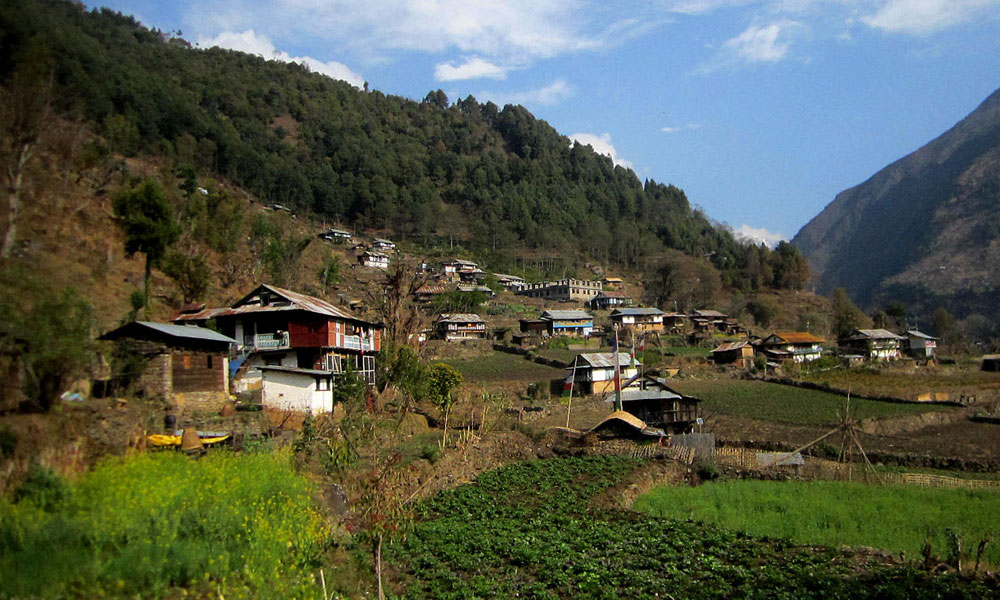
Transportation adds up a significant portion to the Kanchenjunga Trek Cost. There are two ways to get to the starting point of the Kanchenjunga Region. One is by flight, and the other is by bus or public transportation. The cost might vary depending on the choice of trekkers. Luxury transportation services might cost higher, while basic and standard services are budget-friendly.
By Flight
Flight is one of the major contributing aspects of Kanchenjunga Trek Cost. We can fly directly to Suketar Airport at Taplejung from Tribhuvan International Airport in Kathmandu. There are several flight operators like Buddha Air, Tara Air, and Simrik Airlines who offer the service to tourists.
Tara Air has the most budget-friendly standard flight packages. The one-way flight cost is around USD 279 per person for foreign travelers. It means that flying to and from Suketar requires anywhere around USD 560 per person. One flight covers up the seat for fourteen passengers. If you are more likely to opt for a luxury flight to Suketar from Kathmandu, there is an option of a Chartered Flight as well. It costs anywhere from USD 3500 to USD 4000 per person.
By Bus/Public Transportation
If you are not looking forward to a flight from Kathmandu to Suketar, you can opt for a public transportation service. The best way to get there is to travel via bus and reach Bhadrapur or Birtamod first. You can get numerous transportation services from Naya Bus Park in Kathmandu. It takes 10 to 11 hours to get there, where you will have to stay overnight.
From there, you can take a night bus or start your journey in the morning. This will be a long journey through the countryside of Eastern Nepal - it takes around 7 to 8 hours to reach Taplejung. The total transportation by bus can cost you up to Nrs. 5000 per person. The best option to choose transportation is a jeep. It will be time efficient if you opt for Jeep, and the prices are not too high.
Another Best Option
There is also another great way out to reach the starting point of Kanchenjunga Trek. You can take flight from Tribhuvan International Airport in Kathmandu and reach Bhadrapur Airport in Jhapa. From there, you can drive to Taplejung in a jeep, which will be time-saving. The total driving duration might be anywhere from 7 to 8 hours from the Jhapa District of Nepal.
Accommodation: Resting Amidst Nature's Splendor
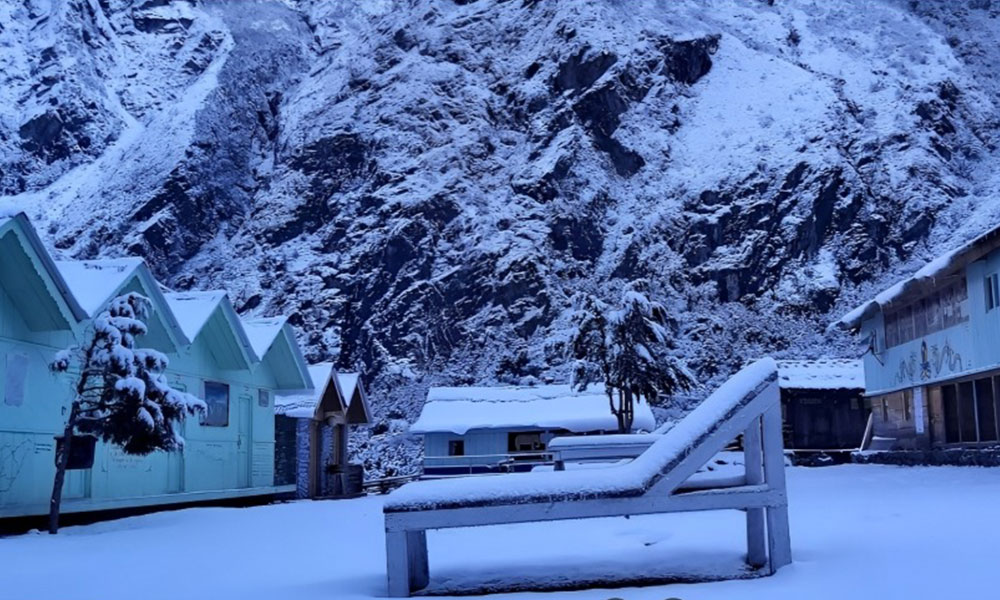
Accommodation is an integral part of any trek; the same goes for the Kanchenjunga Trek. While we have discussed permits and transportation that contribute to the Kanchenjunga Trek Cost, the accommodation also has some parts.
While we talk about accommodation facilities around the Kanchenjunga Region, trekkers usually accommodate in tea houses or lodges. There are no hotels around the region as the trail sits in the remote corners of the northeastern Nepal. Here are the descriptions of accommodation options with their prices.
Tea Houses
Tea houses are the basic lodging facilities scattered along with the trails of Kanchenjunga Trail. They have a shared bedroom, meals, and basic amenities like showers, restrooms, and electricity. Some tea houses may not have electricity facilities as Kanchenjunga Trail is remote. But some come with both electricity and internet services.
The cost of staying at tea houses fluctuates depending on the availability, altitude, and time of year you travel. The average cost of tea houses is around USD 5 to USD 15 per night. The price tag may increase during the peak seasons like Autumn and Spring as the availability is minimal during these time frames. Similarly, the price may increase as the elevation increases, so you better prepare an extra budget for accommodating tea houses.
See more: Kanchenjunga Trek In October
Lodges
There are several lodges to stay in during the Kanchenjunga Trek. Places like Khesewa, Yamphudin, Tortongn, Ramche, and Yalung Ri Base Camp have lodges, so trekkers do not have to worry about accommodation and logistic services. The basic amenities of the lodge features attached bathrooms, hot showers, and even Wi-Fi in some cases. The average cost of staying at a lodge might vary from USD 20 to USD 50 per night. However, remember that the price tags might fluctuate the time of year and availability.
Tented Camps
Tented camps are another accommodation option contributing to the Kanchenjunga Trek Cost. After reaching Suketar, trekkers continue their journey to Lali Kharka (2276 meters), where they can opt for this option. Similarly, other places like Kanchenjunga Base Camp (North and South) do not feature many tea houses or lodges. So trekkers have to accommodate at tented camps. Some trekking agencies offer services of tented camps, while in most cases, trekkers have to manage their logistics for camp. There are also certain things to compromise - trekkers might need to carry their food, gas canisters, and other equipment.
Meals and Drinks: Fueling Your Adventure

Kanchenjunga Trek is a multi-day trekking package, so being physically strong is very essential. It is very important to have strength, stamina, energy, and endurance for such a long hike. Proper nutrition is what matters to retain energy and strength for this trek.
Trekkers can find several tea houses and lodges offering various meals and beverages that can boost your energy. Mostly, we find traditional Nepali Dishes, including Dal, Bhaat, Tarkari, and Dhindo, in remote locations. During our Kanchenjunga Trek, it is not strange to have such tastes. Here is the detailed list of food with prices:
For breakfast, the average cost you can spend is around $4-6. It includes tea, bread, and local dishes like donuts (sel), and tarkari. Similarly, the lunch and dinner price is around $6 to $9. If we have an itinerary of two weeks, the breakfast cost can be around $56 to $84. Similarly, dinner and lunch might cost anywhere from $84 to $126. For a safe estimation, it is required to allocate around $280 to $350 for food during the Kanchenjunga Trek.
You may also like:
Guides And Porters Cost | Assistance Along the Way

Hiring a professional guide for embarking on the Kanchenjunga Trek is mandatory. Nepal Government and Nepal Tourism Board have made it compulsory to have professional assistance during remote trekking for trekkers’ safety and security. We also recommend hiring guides and porters, as your safety is a priority.
Hiring a professional guide can cost around $25 to $35 per person. However, the cost can increase or decrease depending upon the service they offer and their experiences. Some guides with extensive knowledge and experience charge over $50 daily. Here are some service guides offer you during the Kanchenjunga Trek:
- Navigation and route planning
- Safety and emergency management
- Logistics and support
- Interpretation and education (can work as a translator while communicating with local people)
- Motivation and encouragement
Similarly, hiring porters can range from $20 to $30 per person. The cost is influenced by the total weight of your belongings, the porter’s experience, and the level of assistance you seek. Here are some services porters offer during the Kanchenjunga Trek:
- Gear transportation
- Load management
- Route knowledge and navigation
- Setting up camp
- Safety and emergency assistance
Remember, the above-listed cost range is the average price for guides and porters. It does not include tipping and additional fares that come along the trek. Even though it is not mandatory to tip guides and porters, it is highly expected in Nepal.
Gear And Equipment Cost
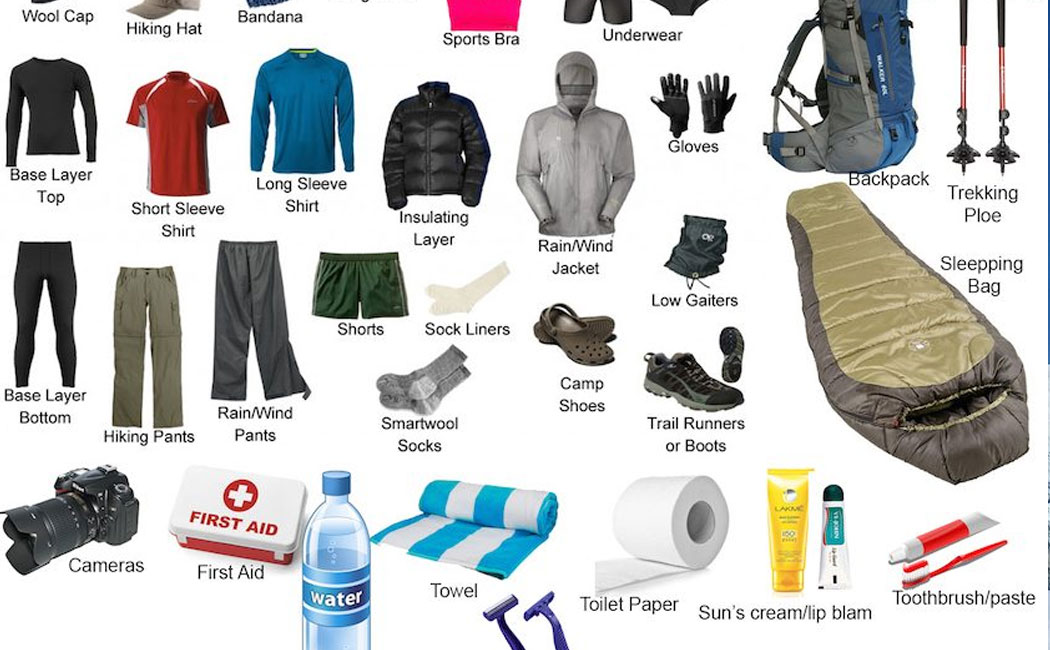
Gear and equipment are the prominent aspects that can fluctuate the Kanchenjunga Trek Cost. Several gears are required for a safe and sound hike to this beautiful destination. There are two ways of getting gear and equipment for this hiking; one is purchasing, and another is renting. While buying gear can be costly, renting would make it budget-friendly. There are several stores in Thamel, Kathmandu, where you can buy and rent essential items. They come at reasonable prices and serve world-renowned brands like Northface. Here is a list of essential gear with prices for this trekking:
- Trekking Poles: $8 to $35
- Warm Hats with Earflaps: $1 to $5
- Warm Synthetic Jackets: $20 to $50
- Down Jackets: $70 to $120
- Sleeping Bag: $50 to $100
- Sleeping Pads: $40 to $100
- Fleece Suit: $10
- Fleece Jackets: $10 to $15
- Trekking Pants: $8 to $35
- Cap/Gloves: $5
- Camping Gas Canister: $5
- Membrane Pants: $20 to $35
- Membrane Jackets: $20 to $30
- Trekking Sandals: $20 to $35
- Backpack 30-40 Liters: $20 to $40
Insurance | Feel Safe While Trekking
Having insurance is very important while trekking around the remote destination of Kanchenjunga. Purchasing health and travel insurance will help you safeguard from unforeseen circumstances during the trek. Situations such as injuries, emergency medical attention, illness, or trip cancellations can come can change the mode of trekking. So it is very recommended to have such insurance for your safety. The cost of health and travel insurance can differ from one organization to another. Factors like age, duration of travel, and coverage amount highly influence the insurance cost.
Frequently Asked Questions
Is the Kanchenjunga Trek cost fixed, or can it vary?
Trekking agencies usually reflect the average Kanchenjunga Trek Cost, with the cost included and excluded. But it is recommended to carry an extra budget to remain safe. It means that the cost of the trek can vary.
Are there any hidden costs associated with the Kanchenjunga Trek?
Most of the transportation, permits, guides, porters, and accommodations costs are transparent. But the package does not include International Transportation by flight. And there might be an amendment in activities while embarking on the Kanchenjunga Trek. So it is always wise to carry extra cash with you.
Can I trek the Kanchenjunga region independently, or is it necessary to hire a guide?
No, you cannot trek to the Kanchenjunga region alone. You need to hire a professional guide for this compulsorily. Remember, your guide should be certified and experienced.
What permits are required for this trek?
You need two permits; Kanchenjunga Conservation Area Project Entry Permit (KCAP) and Restricted Area Entry Permit (RAP) for this trek.
Can I negotiate the cost of services such as accommodation and porter hire?
You can always negotiate the cost of accommodation and porter before utilizing their service. Once you fix the price, it is not recommended to negotiate and respect the service with fair pay.
What is the best time of year to embark on the Kanchenjunga Trek?
Peak seasons like Spring (March to May) and Autumn (September to November) are the best times for the Kanchenjunga Trek.

